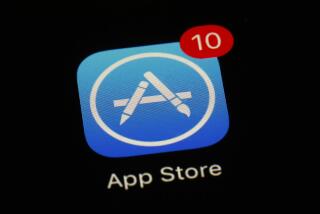If Steve Jobs had his way, we wouldn’t be celebrating the Apple App Store’s 5th anniversary
Today marks the fifth anniversary of the Apple App Store. And perhaps one of the most amazing things about this milestone is that it never would have happened if things had played out the way Steve Jobs wanted.
Just imagine if there were no iPhone apps and no App Store. Aside from creating billions of dollars in value for developers, Apps have been a cornerstone to the success of the iPhone and iPad.
The fact that the App Store does exist is a testament to a characteristic of Jobs and Apple for which neither tends to get much credit. They listen to users.
PHOTOS: Top smartphones of 2013
To understand why, you have to jump back to a piece of history that is often forgotten.
Today, people look at the App Store as part of some master vision cooked up by Jobs. Critics of Apple look at it as symbolic of Apple’s and Jobs’ desire to control every aspect of their technology.
But when the iPhone first landed in 2007, the company was primarily concerned that it actually work and be seen as a stable device when it got into the hands of users. So Apple did not make it possible for third parties to write apps that ran on the phone, worried that glitchy apps might ding the iPhone’s reputation.
Instead, if people wanted applications to run on the iPhone, the company said they could write so-called “Web apps,” little programs that ran inside the mobile browser.
Now, if that had become the dominant way people developed apps as Apple and Jobs expected, then most of these would be able to run on any mobile platform. You wouldn’t have to write one version for iOS, one for Android, and so on. In such a world, Apple wouldn’t have the towering advantage it currently has with the top mobile app developers.
But, of course, that’s not what happened.
What happened, almost immediately, is that people started “jailbreaking” the iPhone to install apps they had written directly onto the phone, so-called “native apps.” Apple tried its best to put a stop to this initially by updating the phones’ operating system, which would in turn wipe out apps that had been installed.
The reason developers preferred native apps was simple. Installed directly on the phone, they could run faster and include more features than a Web app that might have to be pulled across the wireless network each time you ran it. Within a few months of the iPhone’s launch, developers had created about 10,000 Web apps.
But even as it tried to limit the jailbreaking, Apple was listening to developers.
Especially persuasive were arguments from game developers, who wanted more horsepower to write richer games, and financial firms who felt native apps would offer more security.
In October 2007, Apple announced it would relent and create a way for people to write apps for the phone. The company said a Software Development Kit or SDK would be available the following year for developers.
Finally, in March 2008, Jobs gathered reporters at Apple headquarters for an iPhone Software Roadmap Event. At the announcement, Jobs said the Software Development Kit was ready and that the company would launch a store in a few months where developers could submit their apps for sale and users could find apps and download them to their iPhones.
(As a footnote, Jobs was also excited that after just eight months, the iPhone already had 28% of the U.S. smartphone marketshare compared with 41% for Research in Motion. How quaint those numbers seem now.)
Anyway, at the end of the announcement, John Doerr of Kleiner Perkins took the stage to announce that his venture firm had created a $100 million iFund to invest in companies looking to develop software for the iPhone.
On July 10, 2008, the App store opened for business. By September 2008, users had downloaded 100 million native apps.
As the fifth anniversary hits, there are now more than 900,000 apps in the store that have been downloaded 50 billion times.
All made possible by a company willing to admit it was wrong, and in the process make one of the most important pivots in recent tech history.
If you’re feeling super nostalgic, you can watch the March 6, 2008, Apple SDK announcement here:
Also:
Do designers rule Silicon Valley? Ask Yahoo’s Marissa Mayer
Why Apple may need a cheaper iPhone now more than ever
Facebook leaning on Samsung for mobile partnership, report says
More to Read
Inside the business of entertainment
The Wide Shot brings you news, analysis and insights on everything from streaming wars to production — and what it all means for the future.
You may occasionally receive promotional content from the Los Angeles Times.










